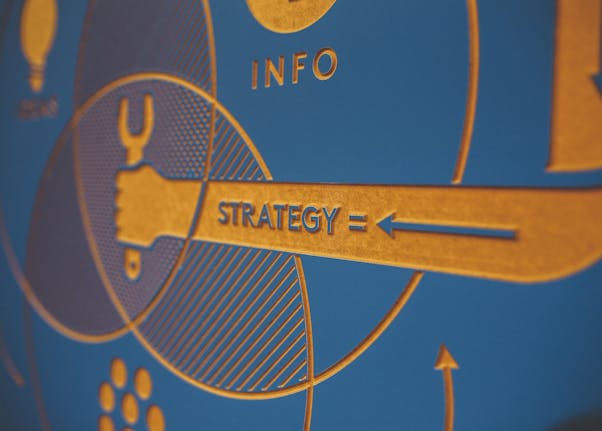Supercharge Your Pipeline: Sales Intelligence Strategies for Growth
 In this end-to-end guide, we’ll explore the intricacies of formulating sales intelligence and pipeline generation strategies to supercharge your sales efforts.
In this end-to-end guide, we’ll explore the intricacies of formulating sales intelligence and pipeline generation strategies to supercharge your sales efforts.
Sales intelligence is the process of gathering, analyzing, and applying data to your sales decision-making to improve outcomes. On the other hand, pipeline generation is the practice of creating, prioritizing, and managing leads throughout the sales cycle.
When combined, these two disciplines provide a holistic framework for the continuous improvement of your sales processes, boosting your revenue and driving growth.
Below, we’ll offer advanced strategies and techniques for those familiar with these concepts to level up their sales performance.
Hyper-Personalization Through AI
 First, let’s look at how various AI technologies are enabling greater personalization in sales processes:
First, let’s look at how various AI technologies are enabling greater personalization in sales processes:
Predictive Analytics
Predictive analysis tools analyze historical data and combine it with buying signals to identify customer patterns and characteristics. Marketers can use this output to create ideal customer profiles (ICPs), and score leads according to their similarity with these profiles.
X Education managed to improve its conversion rates from 30% to 80% by employing a predictive model. The model also managed to pinpoint influential metrics for lead scoring, such as Total Time Spent on Website, Total Visits, and the Lead Origin.
In another case study, an e-commerce retailer successfully leveraged personalization to improve customer engagement, boosting time on website by 30% and conversions by 20%.
By deploying a mix of Salesforce and Saleswings for predictive lead scoring, The Princeton Review managed to increase the number of deals closed by 160 within just a few weeks. It also achieved incremental revenues of over $170,000 compared to the previous period.
Note: Remember, even your email signature is a touchpoint for personalization. Explore how to make a signature that reflects your role and expertise.
Intent Signals
Intent signals, on the other hand, are specific actions or indicators that show that a customer is showing an active interest in your products. Real-time intent signals may indicate that the customer is at a critical decision-making point in their journey. There are many potential real-time intent signals to look out for:
- Website visits
- Content downloads (white papers, sales kits, brochures, etc.)
- Engagement with direct competitors
Natural Language Processing
Natural language processing (NLP) is an AI technology that allows computers to understand and interpret human language. In sales and marketing, it’s increasingly being used for applications like sentiment analysis or to predict buyer intent from sales interactions.
For example, the system may detect negative language in a customer's email. Depending on the content, it may even be able to predict or particular issue at stake, allowing sales teams to address it proactively.
On the other hand, positive sentiments may signal a readiness to buy or progress down the sales journey.
Advanced Pipeline Generation Strategies
 A sales pipeline provides your team with a visual representation of the sales process so they can track a customer’s progress through the various stages. It also allows you to easily track metrics, such as:
A sales pipeline provides your team with a visual representation of the sales process so they can track a customer’s progress through the various stages. It also allows you to easily track metrics, such as:
- The number of deals your team is working on
- Where they are in the sales process with specific leads
- The potential value of each lead or deal
- Average win and conversion rates
There are three main ways to approach having an effective sales pipeline:
The Omni-Channel Approach
The aim of this approach is to craft a seamless journey across various platforms and communication channels. You want to be as consistent in your positioning and communication as possible to enhance the customer experience and encourage conversion.
The following is an example of an omni-channel sales pipeline:
- A prospect clicks a targeted LinkedIn Ad promoting a free webinar.
- Using LinkedIn engagement data, they receive a personalized email about the webinar, focusing on details that appeal to their ICP.
- The prospect attends the webinar and is served content based on their preferences shown in previous interactions.
Sales and Marketing as a Revenue Team
Unifying sales and marketing into a unified “revenue team” can boost customer engagement, streamline the sales pipeline, and improve efficiency. According to the Aberdeen Group, companies with better sales/marketing alignment grow up to 35% faster.
One way to close the gap between sales and marketing is by implementing an iterative feedback loop that encourages continuous data sharing. For instance, a marketing campaign’s performance data is used to inform sales strategies, while the sales team’s feedback on lead quality helps optimize marketing tactics.
Over time, this process will naturally align the strategies and goals of both teams, as well as how they interact with customers.
The Challenger Model
In-depth knowledge of the industry that customers operate in allows a salesperson to offer tailored advice and solutions. It also empowers the salesperson to take charge of the conversation and redirect it towards talking points that are most likely to result in a conversion.
The salesperson effectively guides the prospect through the buying process by challenging their preconceptions and casting their needs in a new light.
A salesperson can demonstrate their expertise through the use of industry-specific content, such as:
- Articles, blogs, case studies, or research papers.
- Educational videos
- In-depth guides and ebooks
- Workshops and webinars
This helps build trust and credibility with prospects as they feel that you understand the unique challenges they face. Particularly in complex or technical fields, buying decisions are heavily influenced by the level of expertise a salesperson can demonstrate.
Integrating Competitive Intelligence

Understanding why your past deals were won or lost is the key to continue capitalizing on what you did right while avoiding potential dealbreakers. A win/loss analysis should help you answer influential questions, such as:
- What factors played a role in the buyer’s ultimate decision?
- How did the differences between what you and competitors offer influence the decision?
- How did operational factors affect the outcome, for example:
- Overall pipeline efficiency
- Quality of customer support
- Supply chain management (product availability/deliverability)
- International coordination
Sales and marketing teams can combine the above with an in-depth competitor analysis and Competitive Intelligence to create battle cards. A battle card is a document that provides a comprehensive yet concise overview of how you stack up to competitors.
It allows you to compete more effectively in the marketplace by helping you identify:
- Your unique selling propositions (USPs)
- How your products and services compare to those of a competitor
- Common concerns or questions clients may have regarding your product/services
- A playbook of proven sales tactics and tips to convert prospects
However, sales is still a highly dynamic field. Even if you prepare to the best of your ability, you may still need to change your tactics and approach at any time. This is where real-time market monitoring tools come in.
These tools provide sales reps with near real-time insights into market trends and conditions, without constant, in-depth research. This allows them to adjust their approach to short-term market trends and demands, answer new questions, and counter new offerings from competitors.
Examples include Tableau, Domo, and Salesforce Einstein Analytics, amongst others.
Data-Driven Decision Making
 It should be clear by now that merely looking at pipeline volume is not a sufficient indicator of how effective your sales process is. Maximizing your opportunities demands a more nuanced approach by analyzing your sales performance across a multitude of KPIs:
It should be clear by now that merely looking at pipeline volume is not a sufficient indicator of how effective your sales process is. Maximizing your opportunities demands a more nuanced approach by analyzing your sales performance across a multitude of KPIs:
- Closing rates
- Average deal size
- Customer lifetime value
- Cost per lead/opportunity
- Average time it takes to close a sale
- Return on ad spend, and more
Only looking at these metrics in combination will allow you to identify the underlying reasons for success or failure across your sales pipeline. It also enables you to see where your spending is producing net positive or negative results and how it’s impacting your revenue.
However, simply collecting this data is not enough. The complexity and dynamism of sales intelligence mean that data can easily be misconstrued or contaminated. Teams should maintain their data quality through regular checks that involve ensuring, amongst others:
- Entries are complete
- Fields contain data of the correct type
- Field data falls in the permissible ranges
- Data entries are consistently formatted
- Entries are unique/not repeated
Using data to inform sales is not a static process. Unlike traditional sales pipelines of old, decision-making needs to be fast-paced and dynamic. New data should be continuously harvested and fed into existing sales.
Teams should have regular data reviews to ensure that they are adjusting to trends, shifts in customer behavior, or market conditions. Fostering a culture of rapid experimentation, feedback loops, and dynamically adjusting goals and targets is key to an effective agile approach.
The Future of Sales Intelligence
.jpg?width=602&height=431&name=The%20Future%20of%20Sales%20Intelligence%20(2).jpg) Many technology trends and advancements are forcing sales intelligence to keep evolving. Two of the most potentially impactful are hyper-targeted content generation and voice AI.
Many technology trends and advancements are forcing sales intelligence to keep evolving. Two of the most potentially impactful are hyper-targeted content generation and voice AI.
Voice AI systems use voice recognition and NLP to understand and interpret human speech. It may have multiple roles to play in the future of sales intelligence. For one, Voice AI can be used to capture a prospect's speech, perform sentiment analysis, look for intent signals, and respond to other commands.
These interactions already take place via devices like Alex and Google Home. However, voice AIs may also replace chatbots as they improve and become more widely accepted.
One way they might streamline the process is by automatically translating or transcribing speech from multiple languages. In an increasingly globalized world, this will be an immense time and resource-saving feature.
Also powered by advancements in AI, hyper-targeted content generation is set to become increasingly accurate and scalable. With improved sentiment analysis and NLP, AIs will be able to generate content that not only appeals to a prospect’s rational mind but resonates with them on an emotional level as well.
The next step may very well be a hyper-targeted voice AI system able to handle the end-to-end sales journey.
Conclusion
If you treat sales intelligence and pipeline generation as a static activity, you’re potentially losing out on immense opportunities to optimize your entire sales operations. Instead, you should aim for a culture of continuous refinement, helping your teams stay agile in a highly dynamic market.
By constantly updating and fine-tuning strategies based on fresh data, you’ll be able to stave off competitors and respond to market changes more effectively. Plus, it will empower you to use hyper-personalization and data-driven decision-making to close more deals.